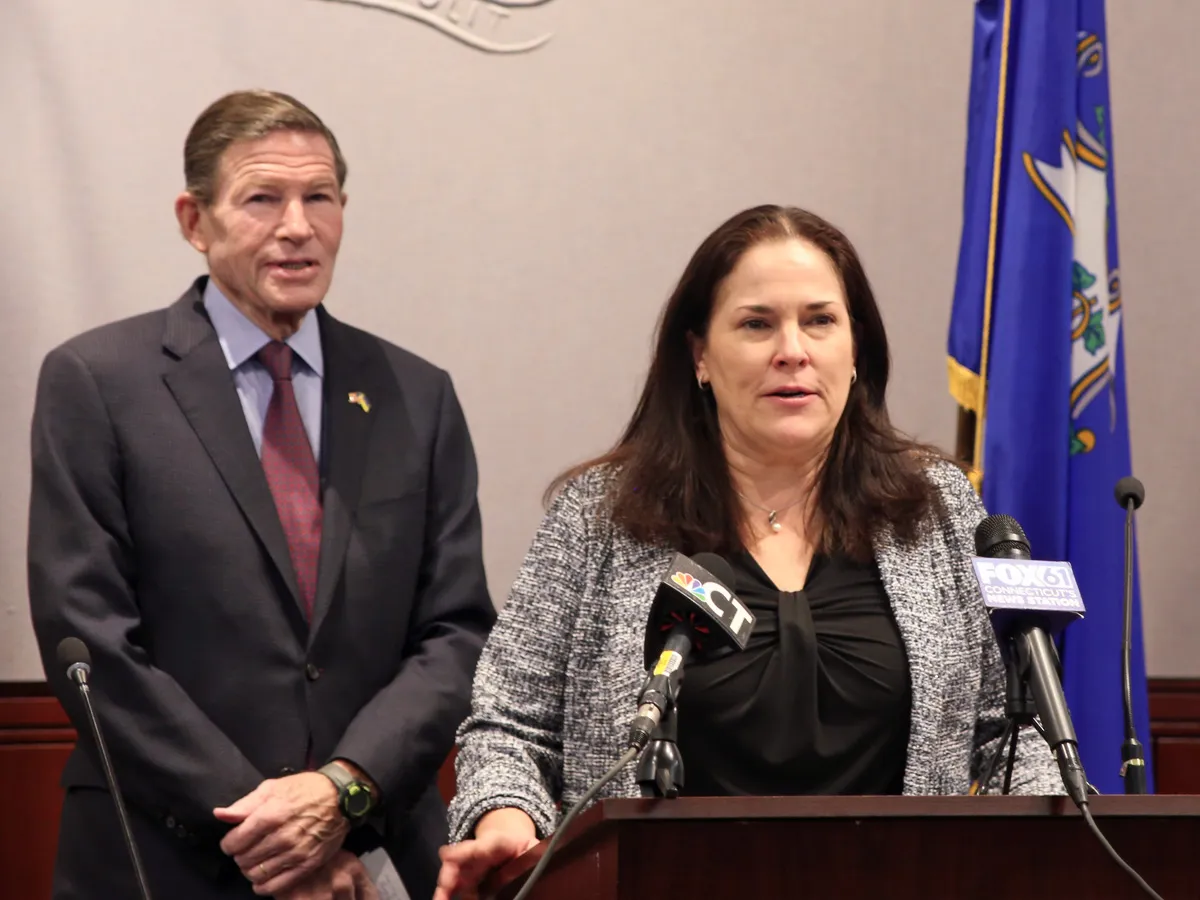From the West Hartford Archives: Northwest School, Albany Avenue near Mountain Road

Audio By Carbonatix
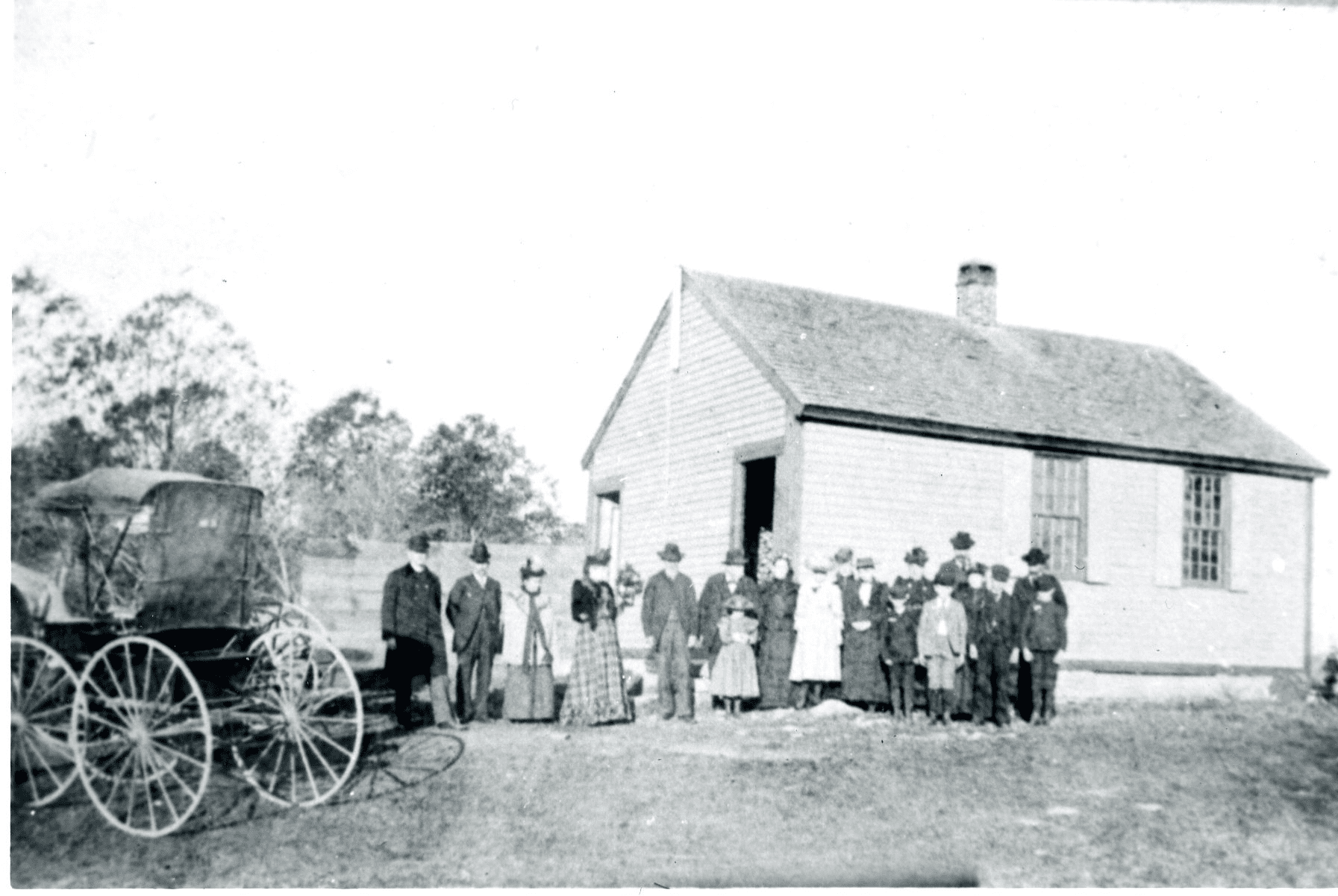
Northwest School. Courtesy Noah Webster House & West Hartford Historial Society.
Historian Jeff Murray takes a look into West Hartford’s past to uncover some surprising information, stir up some memories, or reflect on how much life has changed – or hasn’t changed at all. Enjoy this week’s ‘From West Hartford’s Archives’ …
By Jeff Murray
One of the forgotten places in West Hartford’s history is the Northwest School on Albany Avenue, west of Mountain Road. The school appears in a map from 1855 on the first slope of the avenue heading over the mountain.
This road was first built by the Talcott Mountain Turnpike Company, which was formed in 1798 to connect Hartford to New Hartford. A number of extensions were made to Albany, New York, giving the whole road its modern name over time.
Just west of where the school was built, an old tollgate house stood at the top of the hill near the current entrance to Renbrook School, the occupants collecting a fee from anyone who used the road. After it served its purpose as a toll house, it was used only as a residence until it was torn down in February 1900.
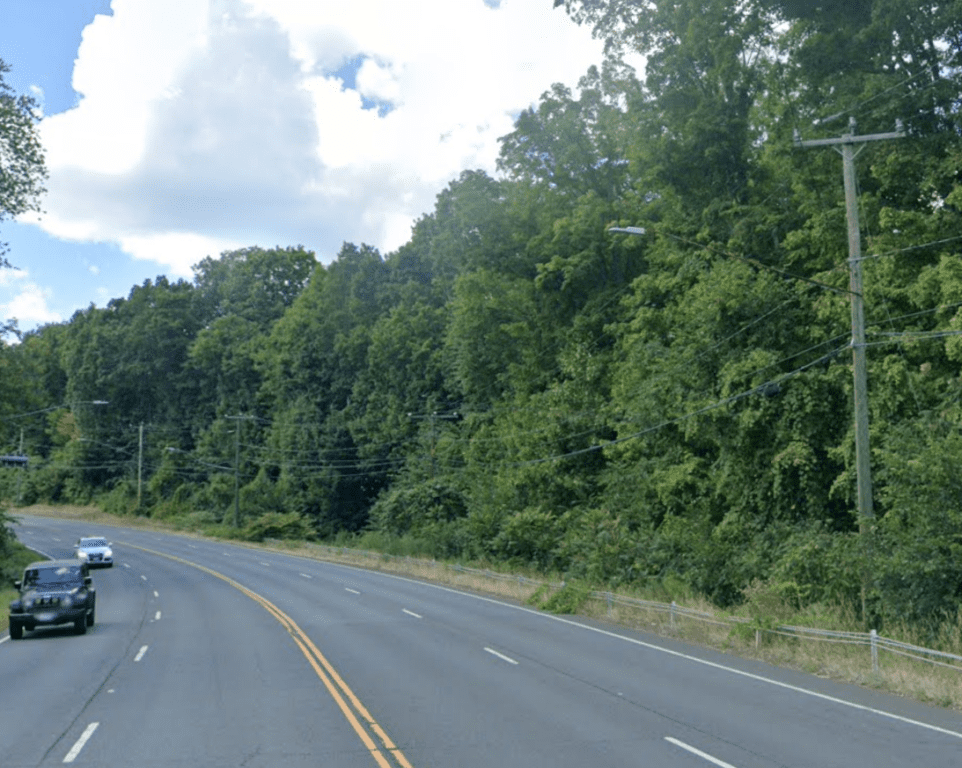
Approximate view looking west towards where the Northwest School would have been located; Google Street View
Across the street from the Northwest School and the tollgate house on the south side was the Phelps tavern. This land, owned by the Phelps family for multiple generations in 18th century, stretched from Mountain Road west to the canal linking to the reservoirs off Farmington Avenue. Later, the land and tavern were owned by the Welles family, who established a permanent presence along the south side until the 1930s.
The Northwest School, on the north side, was a one-story frame building that served the small number of families that resided on good-sized farms in this quiet corner of town. Newspaper clippings are scarce, but there were neighborhood prayer meetings and winter sleigh rides to the schoolhouse (I can’t decide yet whether children sledding in the vicinity of the mountain back then would have been exhilarating or utterly terrifying … probably both).
This area of town did not see the same rapid growth as the rest did – farms remained consistent, land was not subdivided, and by the turn of the century, more effective transportation had made the school less practical for the town to manage. In May 1901, the school committee discontinued it at the end of the term with a total of 16 students. The following fall, the town barge, driven by Charles Fulton, came to the neighborhood to transport any remaining students to either the North School on North Main Street or the Center School.
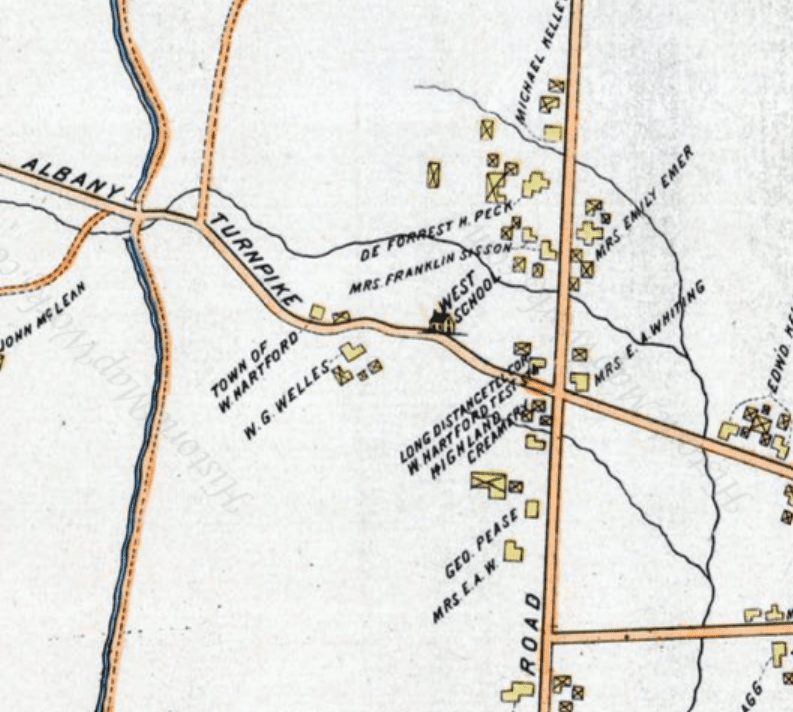
1896 map of the area – the Northwest School can be seen in the center
Neighborhood meetings continued to be held at the schoolhouse, but it went consistently unoccupied for a number of years after it closed down. In the spring of 1908, the Town of West Hartford finally sold it to Otto A. Acker, who owned the land surrounding it on all three sides. Acker had moved to this corner less than a year prior, buying the 54-acre farm of Franklin Sisson. Sisson was integral to the early development of this neighborhood as an officer of the town’s Village Improvement Society in the 1880s and the president of the Highland Creamery across the street on Mountain Road.
Upon the death of his wife in 1907, Sisson sold the whole farm to Otto Acker, who conducted a milk farm on the property for about eight years. In the meantime, he operated a boarding house out of the Northwest School for a number of Italian laborers who were engaged in intense road work along the stretch of Albany Avenue over the mountain.
In December 1911, State Police raided the schoolhouse and seized four kegs of beer that were hidden across the street. A few years later, Acker sold the Mountain Road farm, along with the schoolhouse, to Griffin M. Lovelace and moved to Hartford. The Ackers would eventually create the Highland Dairy Company on South Highland Street in the 1920s.
Lovelace, serving as the superintendent of agencies at the Connecticut Mutual Life Insurance Company, joined the ranks of Hartford men who escaped city life to seek refuge in the countryside. Not long after moving here though, a massive fire destroyed the farmhouse and all of the outbuildings in 1916. Rather than move back to Hartford, Lovelace rebuilt and eventually enlarged the farm into the 1920s.
The fate of the Northwest Schoolhouse though remains mysterious. It is not mentioned much anymore afterwards – was it claimed by the fire or purposely torn down to make room for the expanding farm?
Griffin, with his horticulturist wife Lemire Hayes Forde, carved out a life on the land for a half century. Griffin, even into his 80s, was noted as an active member of the community, a published author, and a pioneer of the life insurance industry. It was under his watch that the landscape evolved to what it is now when Lovelace Drive and Faxon Drive were cut through the farmland in the late 1950s and early 1960s. He lived nearly next door on Mountain Road until his death in 1968 at the age of 91. One of these houses stands inside the footprint of the school that has been gone for over a hundred years.
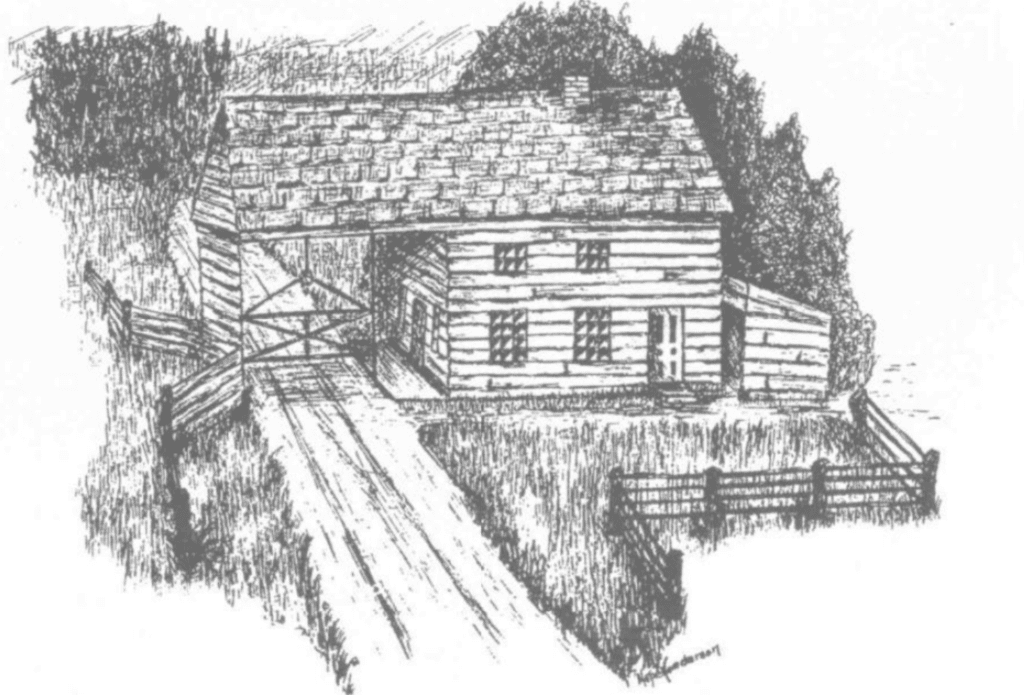
A sketch of the tollgate house west of the Northwest School, drawn from “the memory of John M. Foote as he was accustomed to pass through it on his journeys from Canton to Hartford in his boyhood.” Photo credit: William Hall’s book “History of West Hartford”
For a quiet part of town though, this northwest corner can claim a famous scientist. William Hall’s book on West Hartford says that Edward W. Morley moved to town as a young boy in the 1840s when his father gave up preaching and took up a farm due to his health. This farm was located on the north side of Albany Avenue west of Mountain Road, in the area of the Northwest School and the tollgate house.
While Morley did not go to school here (he was home schooled until the age of 19), he later entered Williams College and after a career of teaching and research work, made a number of contributions to science into the 1890s. He provided the most precise measurement of the atomic weight of oxygen in 1895, for which he was recognized a hundred years later by the American Chemical Society.
More notable, however, was his involvement in the Michelson-Morley experiment. Scientists in the 19th century hypothesized that an invisible substance called the “ether” could affect the speed of light. Teaming up with a physicist named Albert A. Michelson around 1887, they put the theory to the test. If the earth was indeed rushing through this ether, then the speed of light would be different in one direction compared to the other. But to their surprise, no matter which way the earth was moving, the speed of light remained the same and therefore there was no evidence of an ether. This “null result” could have been one of the motivations for Albert Einstein’s famous theory of special relativity in 1905 – the lack of evidence for an ether helped guide the eventual idea that the speed of light in a vacuum is constant, one of the core tenets of the theory.
After his retirement, Morley moved back to West Hartford in 1906 and had a house and a laboratory built for him at 26 Westland Avenue, west of the Center. His death in 1923 prompted the naming of Morley Elementary School when it was built a few years later.
The Northwest School, from the independence of West Hartford until it was discontinued in 1901, witnessed generations of students and parents alike. Its life cycle mirrored its surroundings – from a school to a farm building to a boarding house for laborers and then gone. Consumed by the farmland around it and later overcome by the suburban sprawl of the 1960s, the drive up and down the mountain is a reminder of the school that served as a beacon for the community.
Jeff Murray was born and raised in West Hartford and has been involved with the Noah Webster House & West Hartford Historical Society since 2011 when he was a high school student and won the Meyer Prize for his essay on local history. Jeff routinely volunteers as local history researcher uncovering information for numerous museum programs such as the West Hartford House Tour and West Hartford Hauntings. Jeff works as a data analyst at Pratt & Whitney.
Like what you see here? Click here to subscribe to We-Ha’s newsletter so you’ll always be in the know about what’s happening in West Hartford! Click the blue button below to become a supporter of We-Ha.com and our efforts to continue producing quality journalism.



